1971-72 Volvo 164: Swedish S-Class?
Today Volvo’s near-luxury status is taken for granted, with myriad models available, but that wasn’t always the case. Not that Volvos were ever exactly cheap, but they were pretty solidly middle class for many years, a solid, if not ostentatious, choice, especially in their home market in Sweden. Starting in the late ’50s, they were imported to the U.S. and with the 444 and 544 models, reinforced the fun ‘family sports car’ theme played up in period advertising.
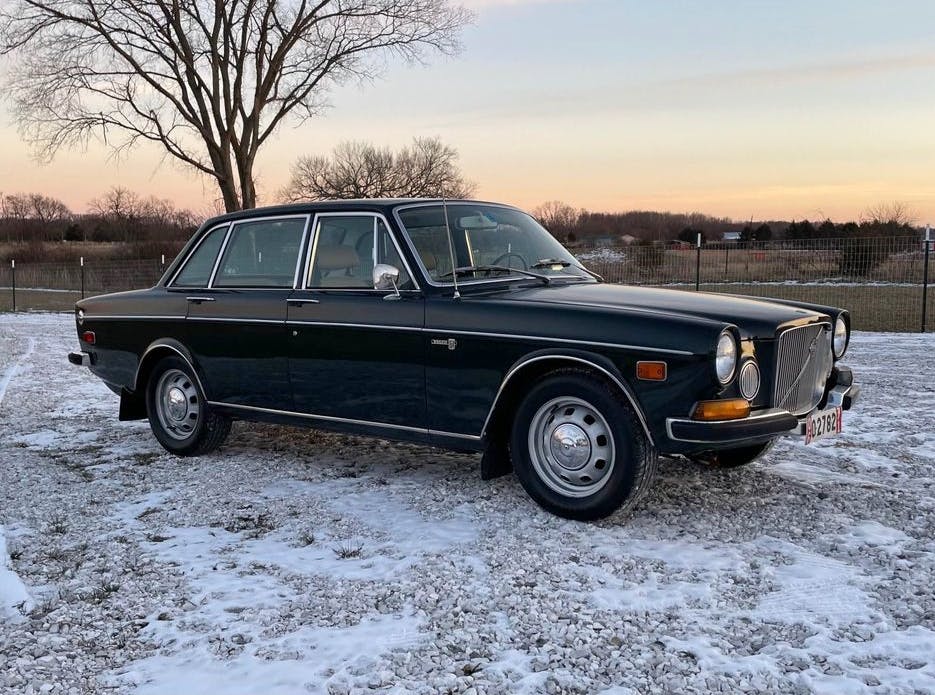
By the mid ’60s they were beloved in certain segments of the population, and the revolutionary, if very squared off, 140 Series only expanded its scope. And in Volvo tradition, the previous model, the 120/Amazon, remained available alongside its more modern sibling…until 1970, believe it or not. By then, though, it was only available as a two-door sedan.
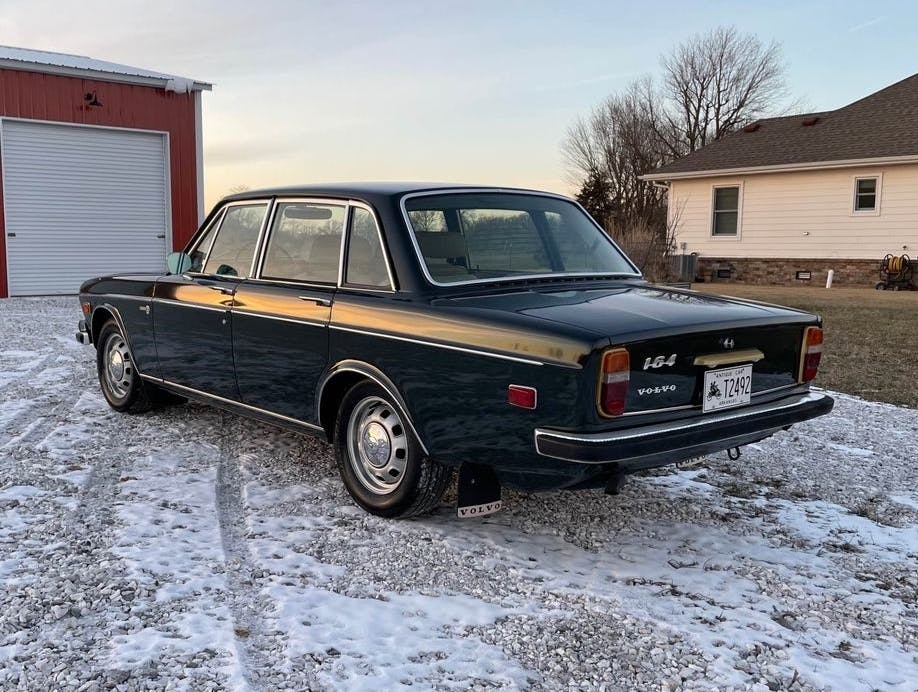
Volvo had had larger models in the past, but they had been long discontinued by the time of the 140’s appearance. What would become the 164 was meant to appeal to owners of other marques, in particular the Mercedes 220.
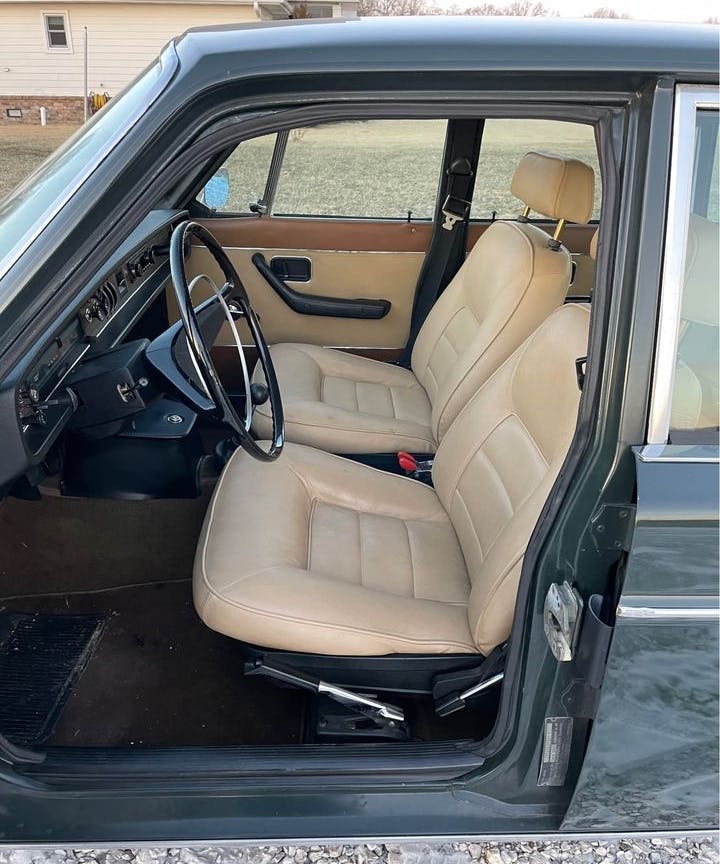
At this time customer loyalty was around 80% in Sweden. Volvo management thought that perhaps a more luxurious model would keep that other 20% of the market from moving over to Mercedes-Benz, if they happened to find the 140 Series not as plush as they’d like.

The 164 was stretched from the firewall forward in order to fit the new inline six cylinder engine. Much like the AMC Ambassador and Classic of the era, the fancier model technically did have a longer wheelbase, but not where it would do any good for the passengers.
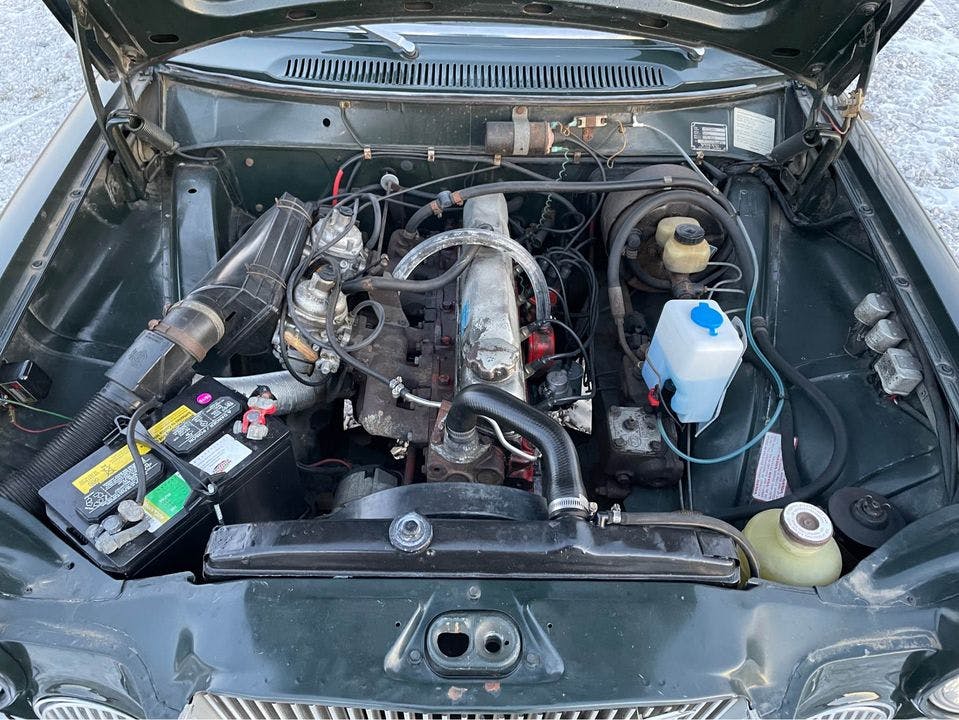
Said stretch resulted in an extra 10 cm in wheelbase. The B30 six-cylinder was 2978 cubic centimeters in its original iteration and developed 145 hp SAE at 5500 rpm. It was essentially the B20 inline four from the 140 Series with two extra cylinders tacked on. Options included overdrive, power steering, and an automatic transmission.

The initial offering sold for 25,500 Krona, the Swedish currency—the 144S sold for 20,550. At the same time, the Mercedes-Benz 250SE sold for 29,500 Krona. The interiors were definitely a step above the 140 models, and while initially cloth upholstery was standard, leather was an optional upgrade.

The leather interior became part of the standard equipment starting in autumn 1969, though cloth could still be specified for those who really wanted it. Headrests and flo-through ventilation were additional new features. Power steering became standard equipment in autumn of 1970.

The 1970-72 164s were really distinctive from the front, with their extra-large chrome grille and a very British looking theme with the separate circular grilles flanking the main one—often filled with fog lamps. That, combined with the extra exterior filagree and plush interior, made for a very attractive sedan.
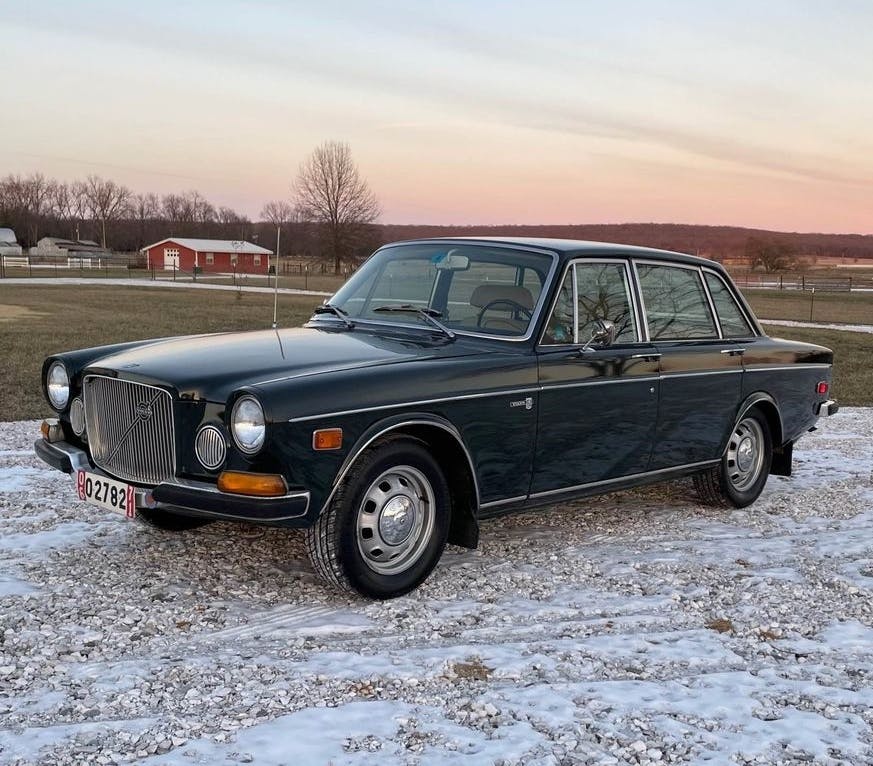
That classic grille would be truncated somewhat for 1973 models. New, impact resistant bumper fore and aft resulted in a shortened grille, new taillights, and a new instrument panel, among other changes. U.S. spec models almost always had a sunroof, power windows and a stereo as standard equipment.
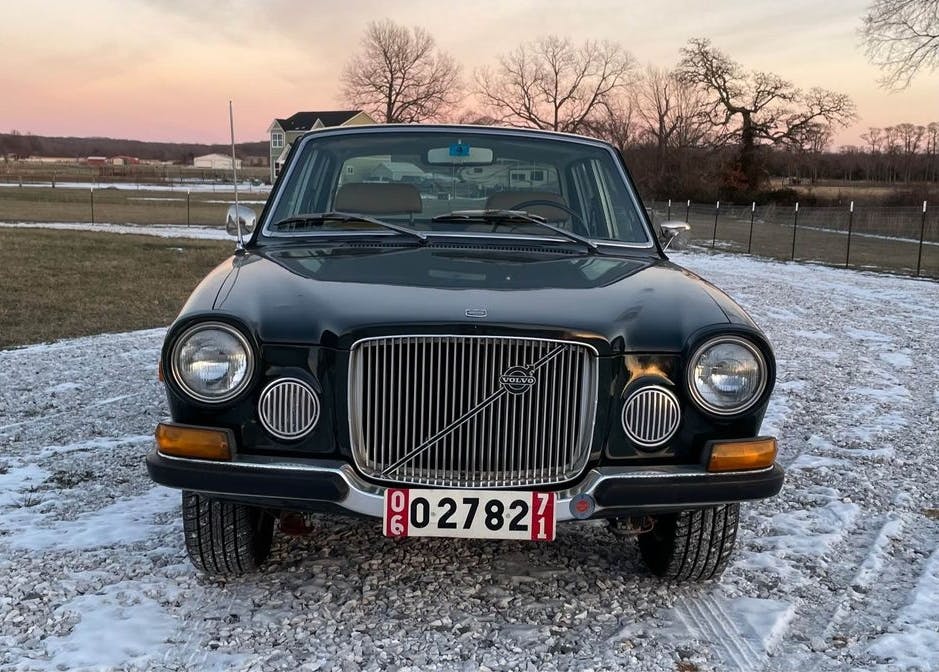
Midway through the 1971 model year, the 164 became the 164E, when the twin SU carbs were replaced with fuel injection. This resulted in 160 hp, a 15-hp bump from the carbureted version. The 164 was a very modern and tidy car in its day, with an overall length of 185.6 inches, a 107.1-inch wheelbase, 32.8-foot turning circle, and four-wheel power disc brakes.

And while it wasn’t quite as plush or ornate as a Continental Mark III or Sedan de Ville, it was also much trimmer, and almost as well-appointed inside. Those seats were extremely nice!
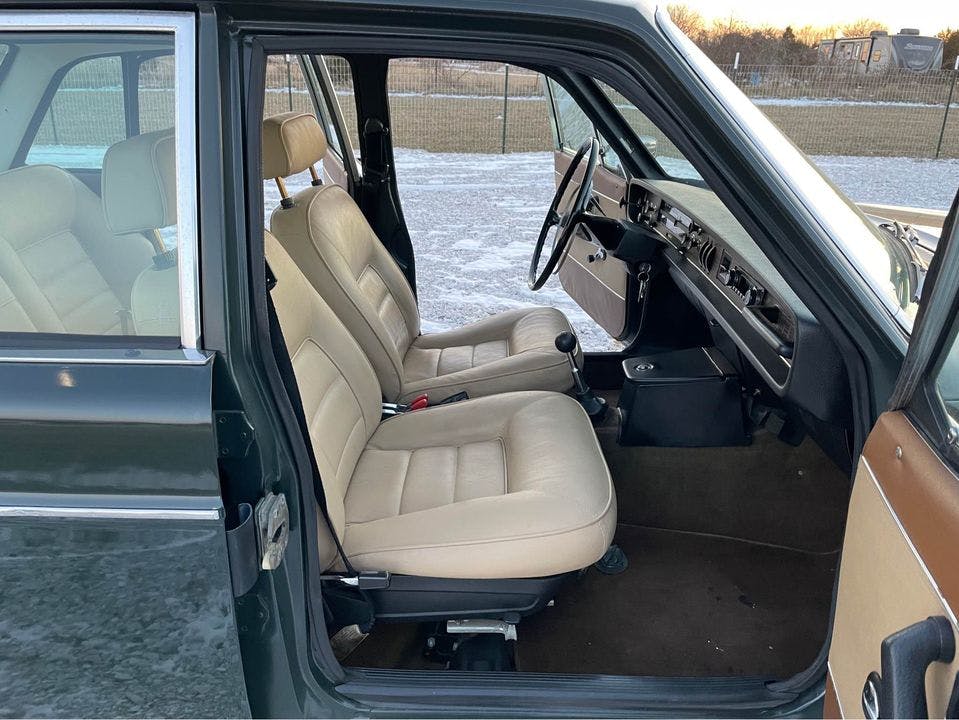
Options on ’71 models included an AM/FM/Multiplex stereo, eight-track tape player, and air conditioning. And with the B30 six, they were likely pretty smooth in their power delivery. Though I never rode in one, a family friend had one in the mid ’70s—the early, large grilled, small chrome-bumpered version—and they absolutely loved it.
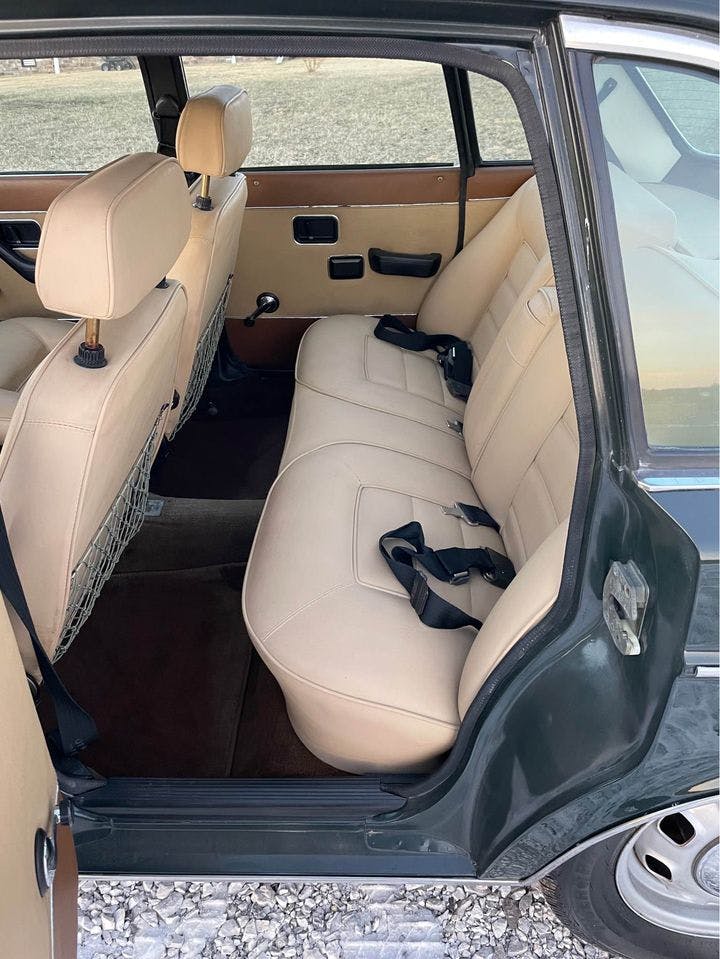
I was lucky enough to have two fine specimens to use for today’s column. The dark red one with red leather was spied in September 2017 at a car show at the casino here in Rock Island. However, that has been the sole 164 I’ve seen in person over the past 25 years, at least.

Sharp-eyed readers will note that these two 164s are different model years. The dark green one is a 1971, and the dark red one is a 1972. The easiest way to tell is the flush door handles on the ’72, whereas the ’71 has chromed pull-style handles with pushbuttons. Those 1972-style door handles lasted all the way through the final 1993 240s, as well!

It even wore a circa late ’90s Lundahl Volvo license plate frame. Mike and Cathy Lundahl were friends of my parents, who drove Volvos since 1974. Mom still has one too, a ruby red XC60. I drove them myself from 1997 to 2015, and still have an identical set of license plate frames, as seen above, hanging in my garage.

I spotted the dark green car back in January on Facebook Marketplace. It was in Gentry, Arkansas and looked neat as a pin. I have always loved 164s, but never saw many as a kid in the ’80s. I do remember a few in the service area when my mom would take her ’86 240DL in for service, but that was about it.
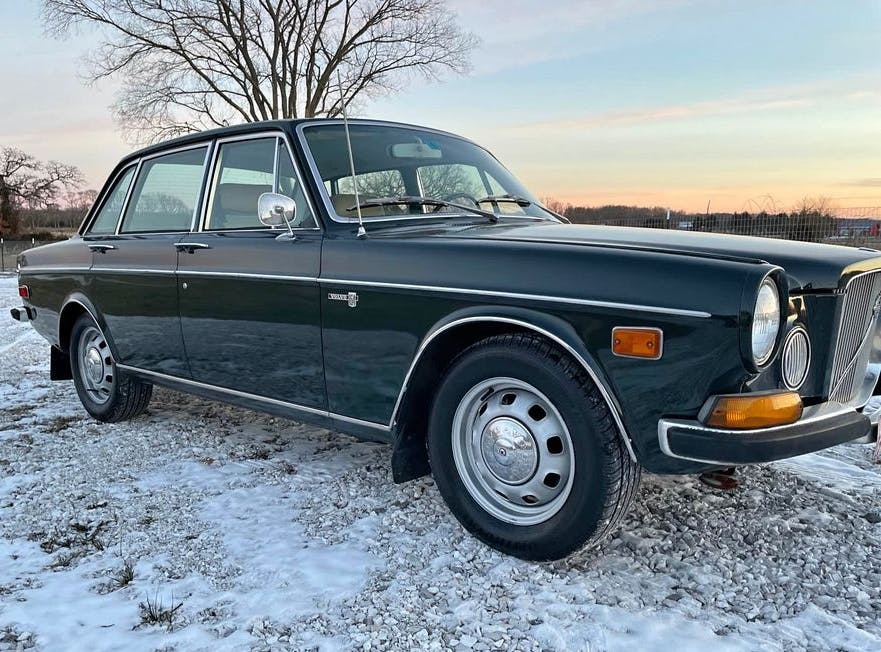
Per the ad: “1971 Volvo 164 · Sedan · Driven 110,000 miles Looking to sell my very clean and solid 1971 164 4-speed. It was a 1 owner up until a few years ago. Spent most of its life in Texas (no rust). It was repainted the original color about 20 years ago. The seats have been redone in their original color (door cards original).
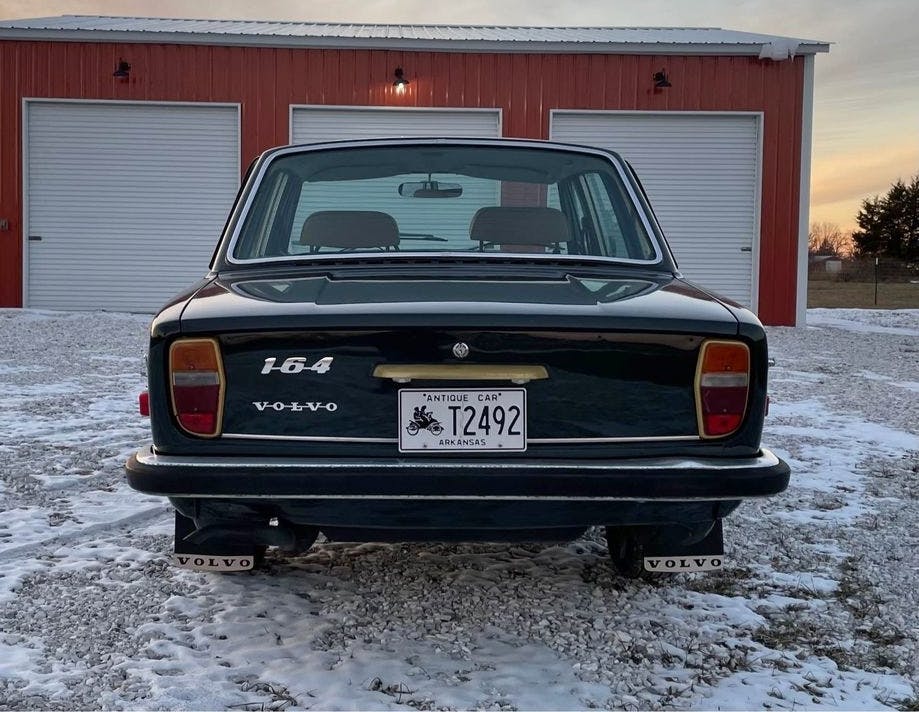
About the car: New clutch and throw out bearing New tires Brake work (rubber lines mainly) 4-speed (no OD) Non AC car Everything works as it should (original radio!) Adjusted and synced carbs Fresh tune-up No cracks in dash! No rust!
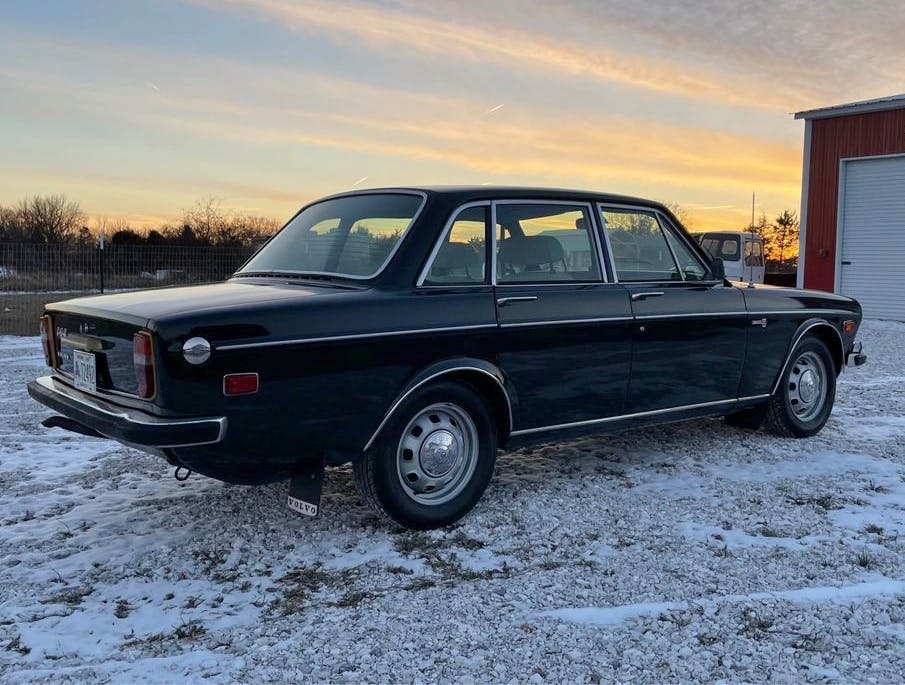
New hood seals New trunk seals New trunk struts Items that need addressing: Rear view mirror is crumbling Door seals (not able to find a supplier. VP stopped carrying them) Very very small leak in muffler (was going to replace entire exhaust but can’t find a supplier. Vp stopped carrying for 71).”

As for the 164 itself, it last saw dealer showrooms in 1975. The 264GL replaced it, and added the new McPherson strut front suspension shared with the also new 1975 240 Series—though of course there was still a lot of 140/164 DNA in those cars! Per one of my Volvo books, 153,023 were built between 1969 and 1975. At the time of its discontinuation it was the best-selling six cylinder car in Sweden. Not bad.
***
Check out the Hagerty Media homepage so you don’t miss a single story, or better yet, bookmark it. To get our best stories delivered right to your inbox, subscribe to our newsletters.



We had two, a 1971 carb automatic and an injected 1974 automatic. 71 was beautifully built with really quality interior fittings but slow and unreliable. 74 was a definite cut in material quality (paint, leather, door cards) but reliable and downright quick, easily able to keep up with friends’ 74 Chevy and 76 Cadillac V8s. If we could have combined the 71 and 74 with the best parts of each…
If you had combined the best parts of both, you would have had a ’72 Of the very many Volvos we have had – that’s the one I most regret selling. Over-drive, sun-roof, fogs, and the deeper steel wheels from a ’75
The red Illinois one’s paint looks good
Had a ‘73 164E back in the day. Yea it was a bit of a slug with the BW35 automatic. But I loved. It was a tank
I think the 164 is more W123 than S class. My family had a US soec 1974 164E automatic for years. FWIW either they decontented after 72 or we had a poverty spec model. Ours had leather, automatic and air conditioning, but no sunroof, hand crank windows, manual door locks and a mono AM/FM radio. We didn’t have a car car with a tape deck and power windows and sunroof until 1984 when the Volvo was replaced by an Audi 4000 Quattro. Interestingly that was my parents’ last car with automatic until 1994.
It was solid and generally reliable car after my parents’ unreliable S class (1966 250S that eventually threw a rod).
Love these. Those sure don’t look like SU carbs in the picture, though.